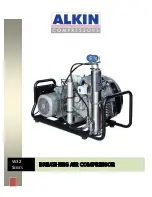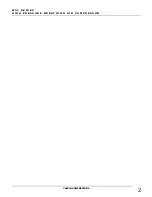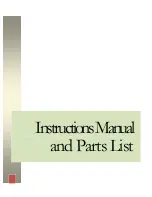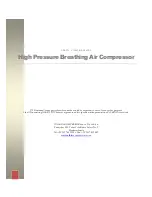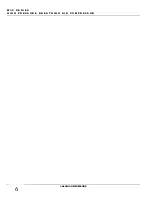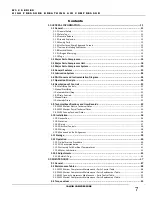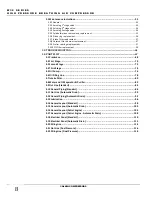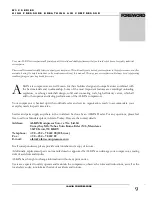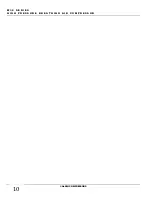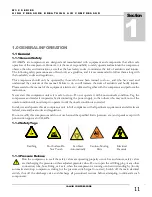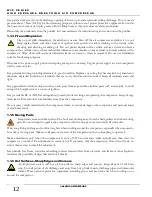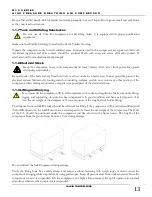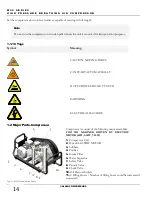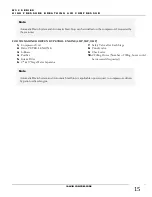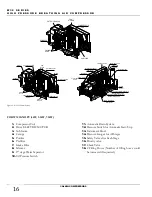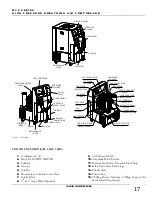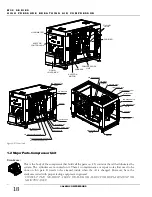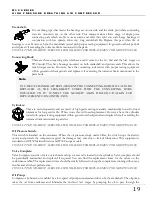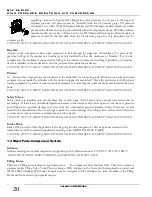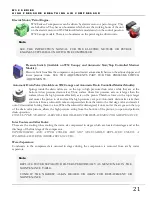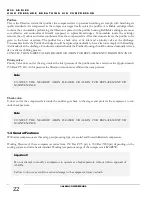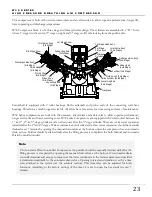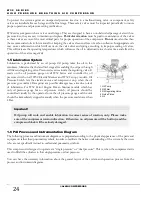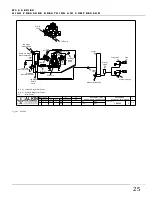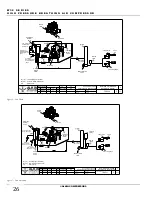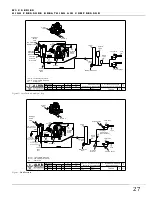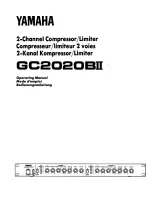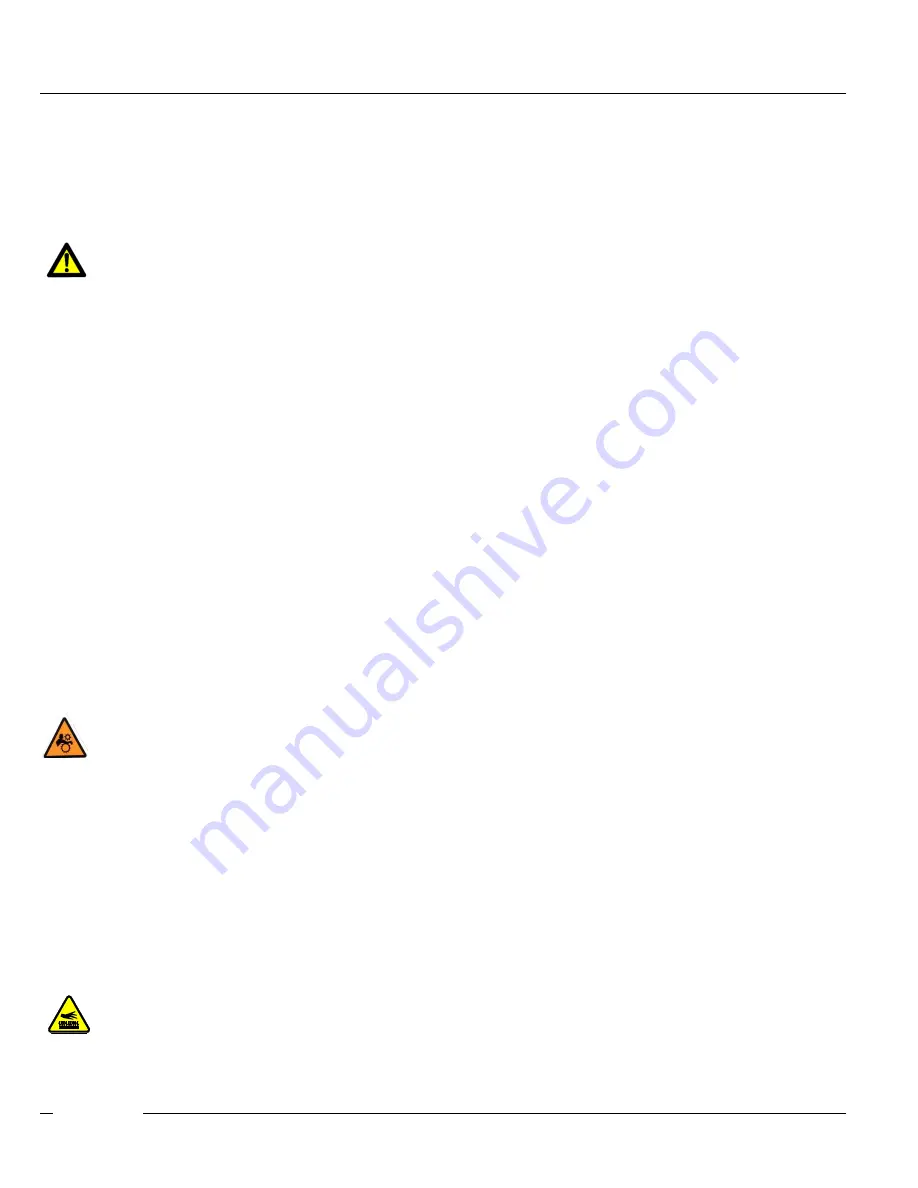
W 3 2 S E R I E S
H I G H P R E S S U R E B R E A T H I N G A I R C O M P R E S S O R
©ALKIN COMPRESSORS
12
Keep all persons away from the discharge opening of hoses, tools and accessories during discharge. Do not use air
pressure above 7 Bars (101 Psi) for blow cleaning purposes, without use of proper protective equipment. Do not let
the hoses move free or don’t play games with the filling hoses a
s they may cause accidents and injuries.
Drain daily the condensate from the purifier, as it may accelerate the internal rusting and corrosion of the purifier.
1.1.4 Fire and Explosion
Clean up oil spills immediately, if and when it occurs. Shut off the air compressor and allow it to cool.
Keep sparks, flame and other sources of ignition away and do not allow smoking in the vicinity when
checking and draining or adding oil. Do not permit liquids such as airline anti-icer system anti-freeze
compound, or oil film or any other combustible substance to accumulate on any external or internal surfaces of the
compressor. Wipe down with aqueous industrial cleaner or steam to clean as required. Do not use flammable
solvents for cleaning purposes.
Disconnect the power supply prior to attempting any repair or cleaning. Tag the power supply to avoid unexpected
start by someone else.
Keep electrical wiring, including terminals, in good condition. Replace any wiring that has cracked, cut, abraded or
otherwise degraded insulation or terminals that are worn, discolored and corroded. Keep all terminals clean and
tight.
Keep grounded conductive objects such as tools, away from exposed live electrical parts such as terminals, to avoid
arcing which might serve as a source of ignition.
Keep a suitable BC or ABC fire extinguisher(s) nearby while servicing and operating the compressor. Keep oil rags,
trash, leaves litter and other combustibles away from the compressor.
Do not spray volatile materials into the compressor intake, as serious damage to the compressor and personal injury
or death may result.
1.1.5 Moving Parts
Keep hands, arms and other parts of the body and clothing away from the belts, pulleys and other moving
parts. Do not attempt to operate the compressor with the canopy cover removed at flywheel side.
Wear snug fitting clothing and confine long hair when working around the compressor, especially when exposed to
hot and/or moving parts. Make sure all persons are clear of the compressor prior to attempting to operate it.
Make adjustments only when the compressor is shut off. When necessary, make adjustments, then start the
compressor to check if the adjustment is correct or not. If incorrect, shut the compressor, blow down the air, re-
adjust, than re-start to check the adjustment.
Keep hands, feet, floors, controls and walking surfaces clean and free from oil, water, anti-freeze or other liquids to
minimize the possibility of slips, falls and shock hazard.
1.1.6 Hot Surfaces, Sharp Edges and Corners
Avoid physical contact with hot oil, hot surfaces, sharp edges and corners. Keep all parts of the body
away from all points of air discharge and away from hot cylinder heads, discharge pipes and intercooler
surface. Wear personal protective equipment, including gloves and protective hat when working on or
around the compressor.

